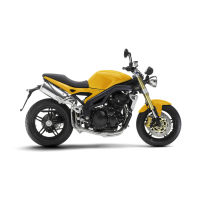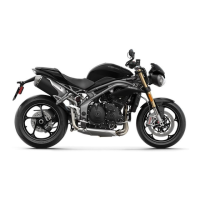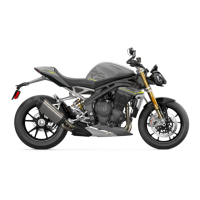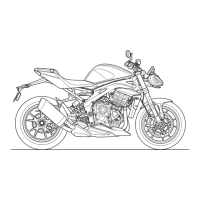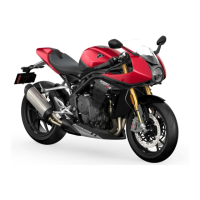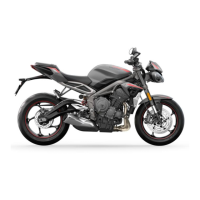111
Maintenance and Adjustment
Tire Pressure Monitoring System (if
fitted)
The tire pressures shown on your instrument
pack indicate the actual tire pressure at the
time of selecting the display. This may differ
from the inflation pressure set when the tires
are cold because tires become warmer
during riding, causing the air in the tire to
expand and increase the inflation pressure.
The cold inflation pressures specified by
Triumph take account of this.
Owner's must only adjust tire pressures when
the tires are cold using an accurate pressure
gauge, and must not use the tire pressure
display on the instruments.
Tire Wear
As the tire tread wears down, the tire
becomes more susceptible to punctures and
failure. It is therefore not recommended to
use tires until they are worn to their
minimum.
Minimum Recommended Tread
Depth
In accordance with the periodic maintenance
chart, measure the depth of the tread with a
depth gauge, and replace any tire that has
worn to, or beyond the minimum allowable
tread depth specified in the table below:
Incorrect tire inflation will cause abnormal
tread wear and instability problems that
may lead to loss of control and an accident.
Under-inflation may result in the tire
slipping on, or coming off the rim.
Over-inflation will cause instability and
accelerated tread wear.
Both conditions are dangerous as they may
cause loss of control leading to an accident.
Under 80 mph
(130 km/h)
0.08 in (2 mm)
Over 80 mph
(130 km/h)
Rear 0.12 in (3 mm)
Front 0.08 in (2 mm)
Only operate this Triumph motorcycle at
high speed in closed-course on-road
competition or on closed-course racetracks.
High-speed operation should only then be
attempted by riders who have been
instructed in the techniques necessary for
high-speed riding and are familiar with the
motorcycle's characteristics in all
conditions. High-speed operation in any
other circumstances is dangerous and will
lead to loss of motorcycle control and an
accident.
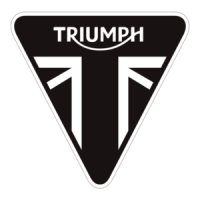
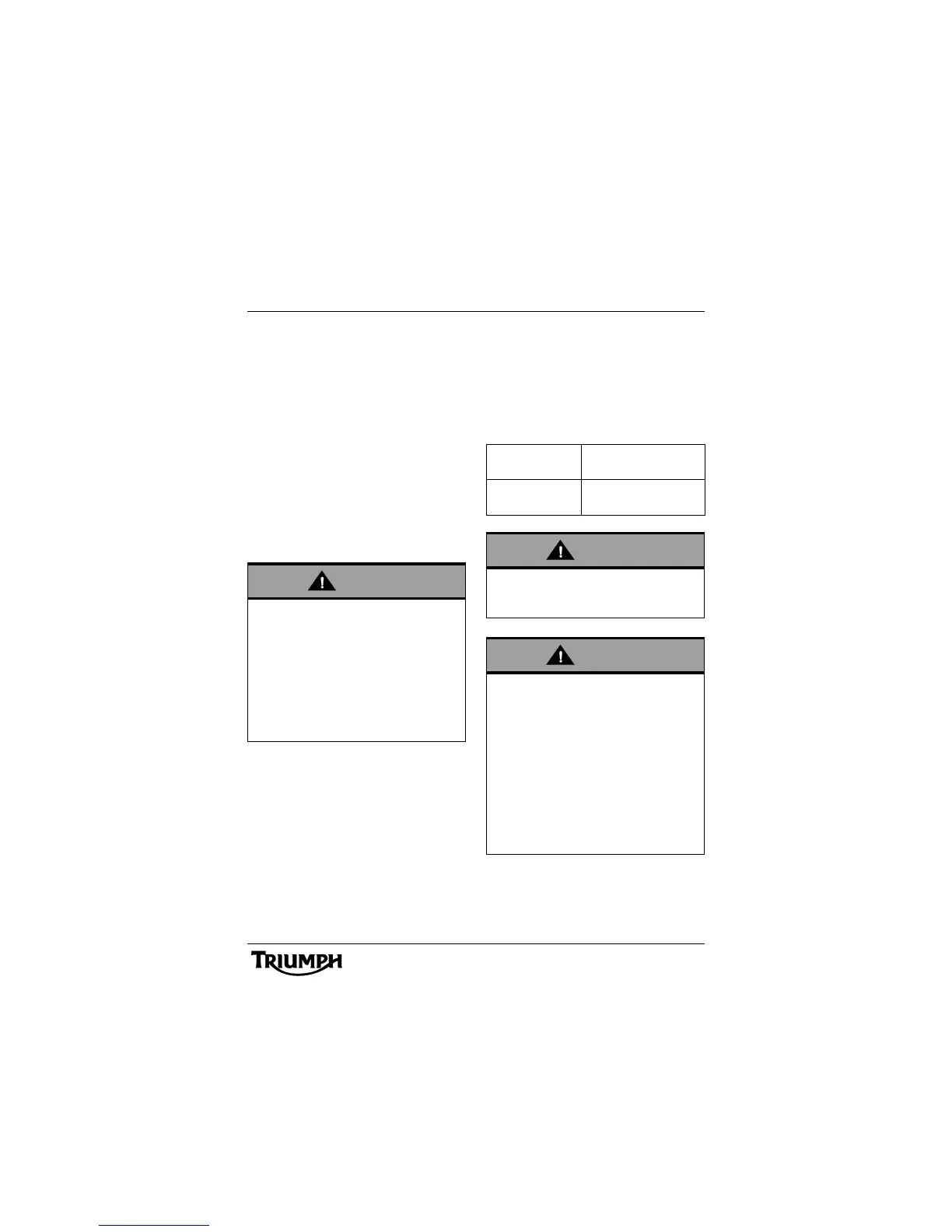